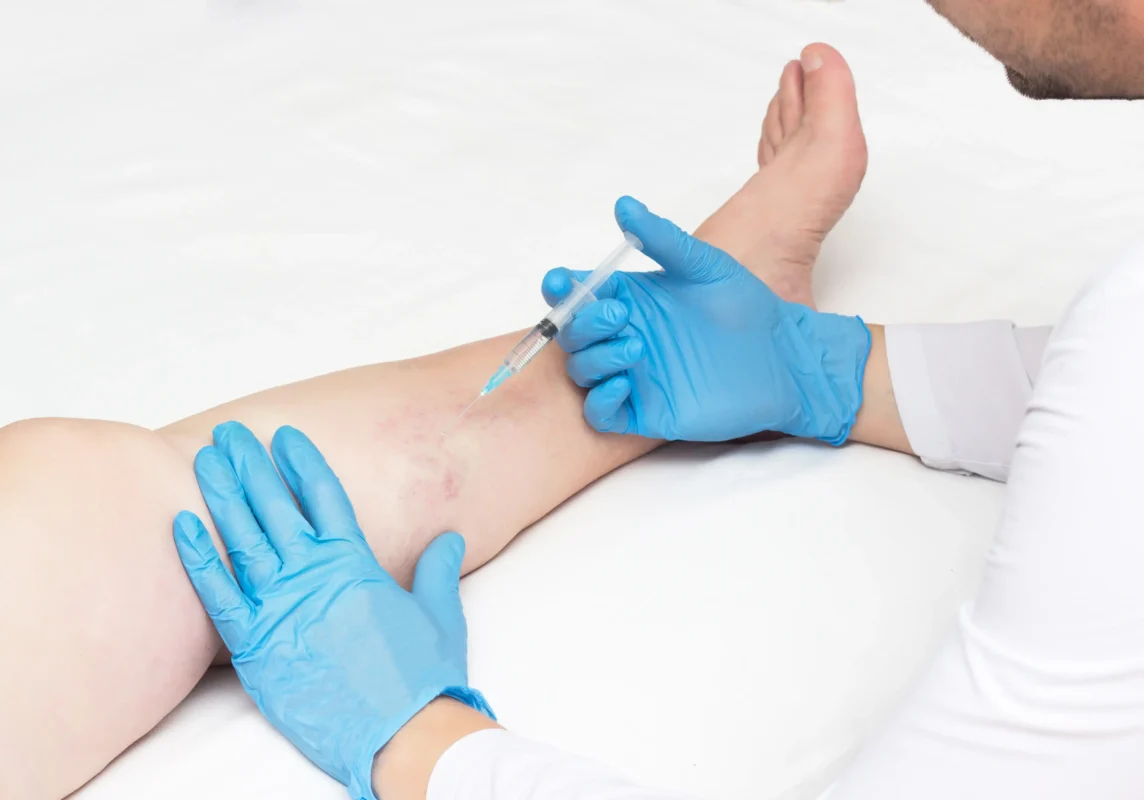Venous ulcers are painful skin ulcers that can occur in 1% of all American women past middle age. If you fit into this category, you may want to know if you are likely to get them. Read on to know what causes them – and whether you are at risk of developing venous ulcers.
So what causes venous ulcers?
Any ulcer occurs when skin breaks down easily, and cannot heal properly. In the case of venous ulcers, this usually happens if you have long standing vein disease in your legs, called chronic venous insufficiency.
Your leg veins are supposed to carry impure blood back to your heart, against gravity. This is helped by tiny valves that are present at the top of your leg veins. These prevent the blood from falling back into the legs once it goes up. When you have vein disease, however, these valves become defective. This causes the impure blood pooling in your legs. Over time, the excess blood increases the pressure in your leg veins, and leaks into the surrounding tissue, including the skin. The fluid buildup prevents the tissues form getting proper nutrients and oxygen.
The high pressure, coupled with lack of nutritional support makes the tissues extremely fragile. So, even you get a small injury or scratch, the skin immediately breaks down and forms a leg ulcer.
Combined with vein disease, your risk of venous ulcers increases if you smoke, are overweight, or have a history of blood clots (your vein doctor would call this deep vein thrombosis). Having had a previous leg injury also increases your chances of developing a venous ulcer. Patients who have recently had hip or knee surgery are also at risk of developing ulcers.

How do you know if that painful sore on legs (or thigh ulcer) is a venous ulcer?
Venous ulcers have certain characteristics that can help distinguish it from other skin conditions:
- Earlier signs: Before the ulcer actually developed, you may have noticed changes in the color of the ski in that region, to dark red or purple. A dry, itchy feeling also precedes venous ulcer formation.
- Symptoms specific to vein disease: These include throbbing and aching legs, swollen ankles, heaviness of the limbs, and general tiredness and fatigue. You may also notice that your veins tend to bulge out. These bulging veins are varicose veins – which is why this ulcer is also called varicose ulcer.
- Appearance: The venous ulcer is shallow, and has a red base. There may be some yellowish slough within the ulcer, which is basically dead tissue. The skin around the ulcer appears tight and shiny.
- Fluid discharge: You may see a foul-smelling fluid oozing from the base of the ulcer.

If you have these symptoms, it is important to see a vein specialist right away. A vein doctor will perform an imaging study of the veins in your lower legs, called a duplex ultrasound. This will analyze the location and extent of venous insufficiency, and will help the doctor guide you to the correct modes of treatment for this condition.
Evaluation and management of lower extremity ulcers
If you develop a venous ulcer, seek medical advice immediately, to avoid further serious consequences. The vein doctor will evaluate your history for lifestyle diseases such as diabetes and obesity. You will also need a complete physical examination and certain tests to evaluate the type and degree of vein disease.
There are two steps in treatment. The first is managing the ulcer itself, and the second step is preventing future ulcers from occurring. To stimulate healing of the ulcer, your doctor may need to perform a small procedure called ‘debridement’. This involves cutting away dead tissue, and cleaning the ulcer to prevent it from getting infected. The ulcer will need to be dressed, and compression bandages will be placed over the dressing, covering the entire leg. A compression bandage reduces the pressure in the leg veins and improves blood circulation. The compression bandage and dressings should be changed once a week, until the ulcer heals. At first, the dressings may be painful, and your doctor will prescribe painkillers to deal with this. If your ulcer is infected, you may receive a course of antibiotics.
To help the ulcer heal faster, you may be asked to keep your legs elevated. Active exercise, such as walking, will also improve blood flow and healing.
To prevent future ulcers, you need to treat the underlying condition – chronic venous insufficiency. The only way to do this is to actually remove the diseased vein from the body. Once the defective vein is gone, blood re-routes to healthier veins, and circulation improves, relieving pressure from the legs. Removing the vein, however, does not necessarily mean a surgical procedure. Modern vein clinics offer advanced methods of treatment that are comfortable and minimally invasive. These procedures seal off the vein so that blood can no longer flow through it. The defective vein eventually gets digested by the body.
The Vein Treatment Clinic has an expert team of board certified vein specialists, who offer comprehensive care for venous ulcers. To learn more about this, our cutting edge techniques to deal with vein disease, call (844) 690-1788, or book an appointment online.








